Titanic Religious Services and Hymnology
For thousands of years, religion has played a major part in the daily life of most people regardless of the region and culture. Accompanying that, hymns and spirituals have connected congregations, families, and generations in praising and worshiping God for centuries. Most of the people on the Titanic either professed Christianity or had a religious background in some form or another and certain hymns were familiar to them either from the days of their youth or continued to be familiar to them as they continued going to religious services. Hymns carried special meaning with declarations of faith and reminders of important spiritual lessons which provided some connectivity on board the Titanic and later, some solace.
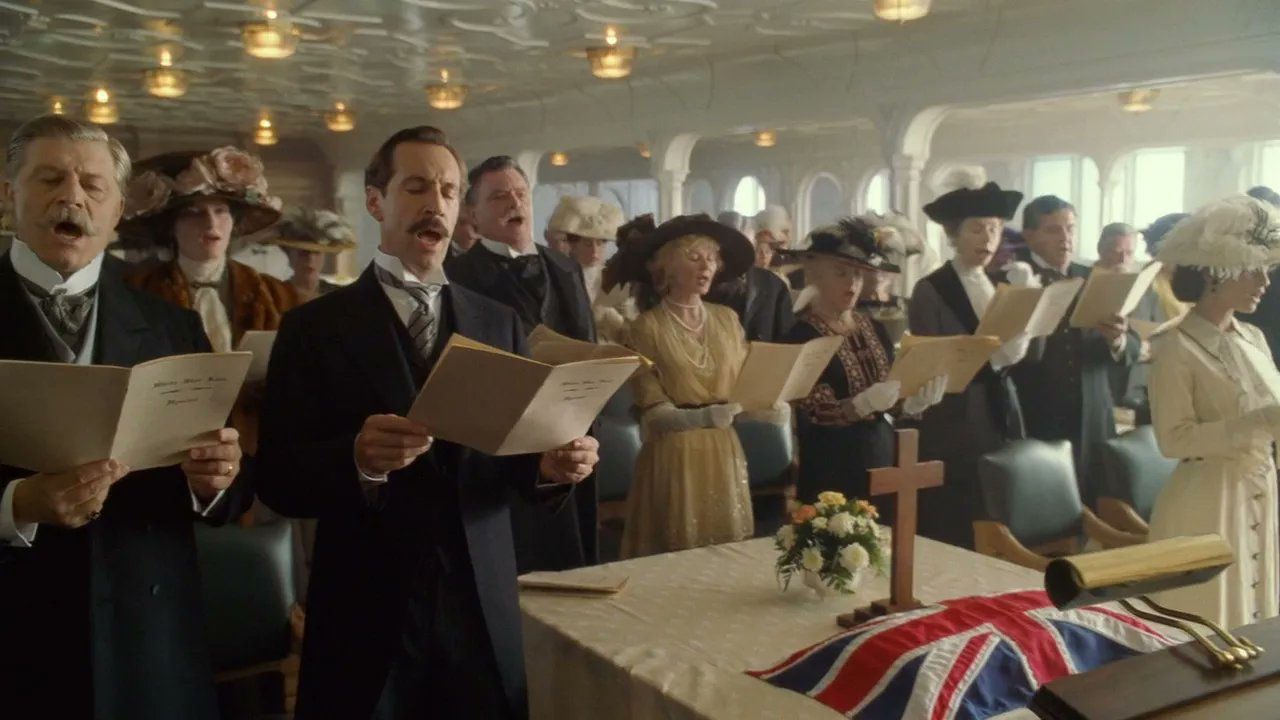 Religious services in the Titanic's 1st class Dining Saloon recreated in the 1997 film
Religious services in the Titanic's 1st class Dining Saloon recreated in the 1997 film
Sunday Services
On Sunday morning, passengers gathered in their respective dining saloons of each class to have their Protestant religious services. 1st class was led by Captain EJ Smith in the 1st class Dining Saloon after breakfast. The services in both 1st and 2nd class seem to have been formal affairs rather than long drawn out sermons. For two of the passengers, one of the hymns meant something. 1st class passenger Archibald Gracie IV said, “The exercise and the swim gave me an appetite for a hearty breakfast. Then followed the church service in the dining saloon, and I remember how much I was impressed with the “Prayer for those at Sea,” also the words of the hymn, which we sang, No. 418 of the Hymnal. About a fortnight later, when I next heard it sung, I was in the little church at Smithtown, Long Island, attending the memorial service in honor of my old friend and fellow member of the Union Club, James Clinch Smith. To his sister, who sat next to me in the pew, I called attention to the fact that it was the last hymn we sang on this Sunday morning on board the Titanic. She was much affected, and gave the reason for its selection for the memorial service to her brother because it was known as Jim’s favorite hymn, being the first piece set to music ever played by him as a child and for which he was rewarded with a promised prize, donated by his father. What a remarkable coincidence that at the first and last ship’s service on board the Titanic, the hymn we sang began with these impressive lines:
O God our help in ages past,
Our hope for years to come,
Our shelter from the stormy blast
And our eternal home.”
The hymn “O God, Our Help in Ages Past” was written by Isaac Watts, a native of Southampton. There is a memorial to Isaac Watts near the Titanic Engineers’ Memorial in Southampton today.
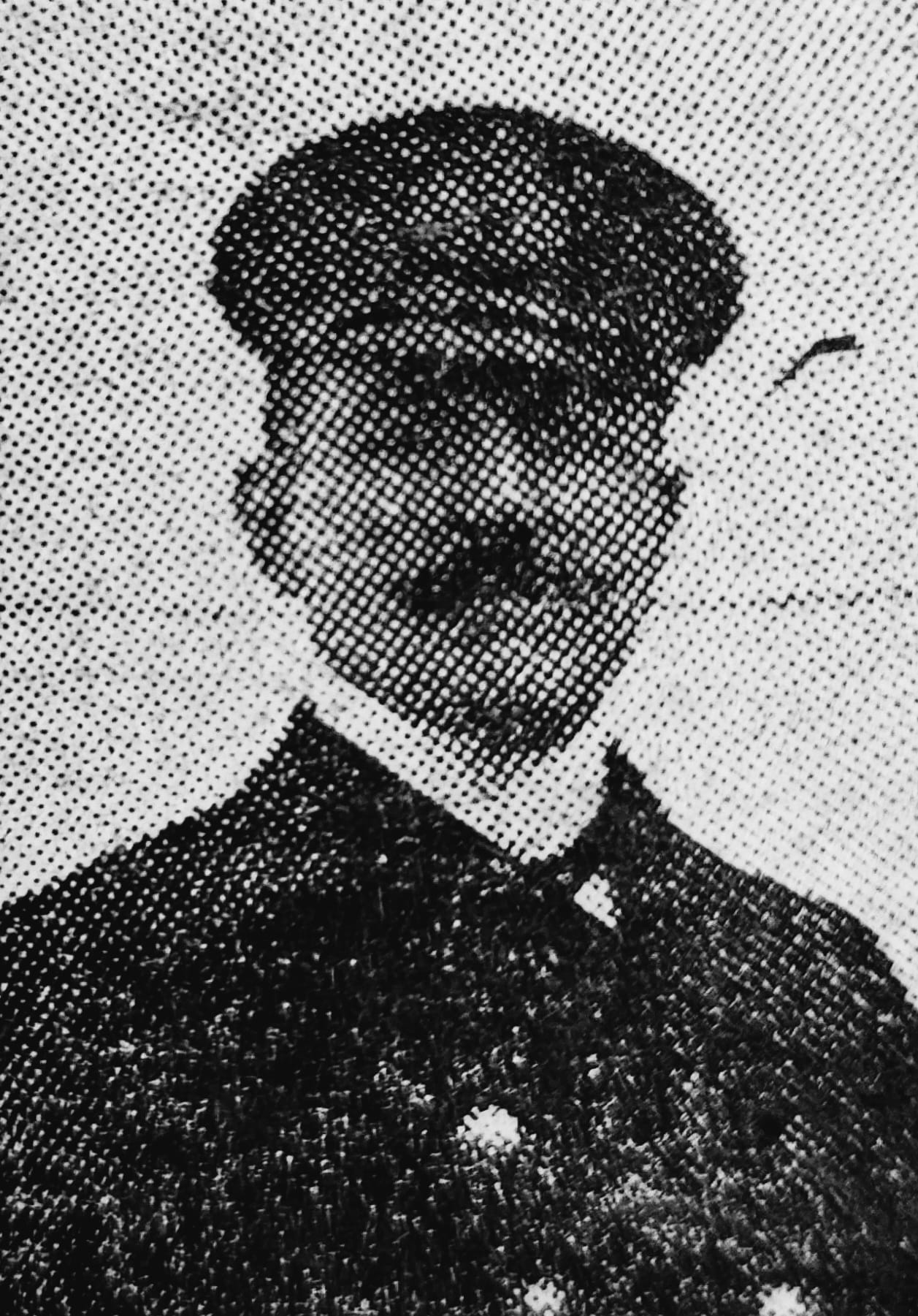
Assistant Purser Reginald Barker who led the 2nd class religious service and granted permission for the hymn sing-song later.
The 2nd class service was led by Assistant Purser Reginald Barker after breakfast. Kate Buss wrote, ““We had a very short morning service by the Purser, but no address. Strange to say after that, although we didn’t quite realize it, every prayer and hymn seemed to be preparing us for that awful experience.” Sidney Collett recalled that Barker did read from “13th Corinthians,” which was likely 1 Corinthians 13, a famous passage about love. Selena Rogers Cook said, "We then went and got ready for church service which was held in the dining room at 10:30. We had part of the Morning Service, and 3 hymns. It only lasted until 11 o'clock. We were provided with 'White Star' prayed books but I used my own little one I had with me." In addition to this service, the Catholic priests led mass in 2nd class. Edwina Troutt wrote, “There was a priest on board, who celebrated Mass on Sunday. I never in all my life met such devoted people, and I often think we were all too happy to live long.”
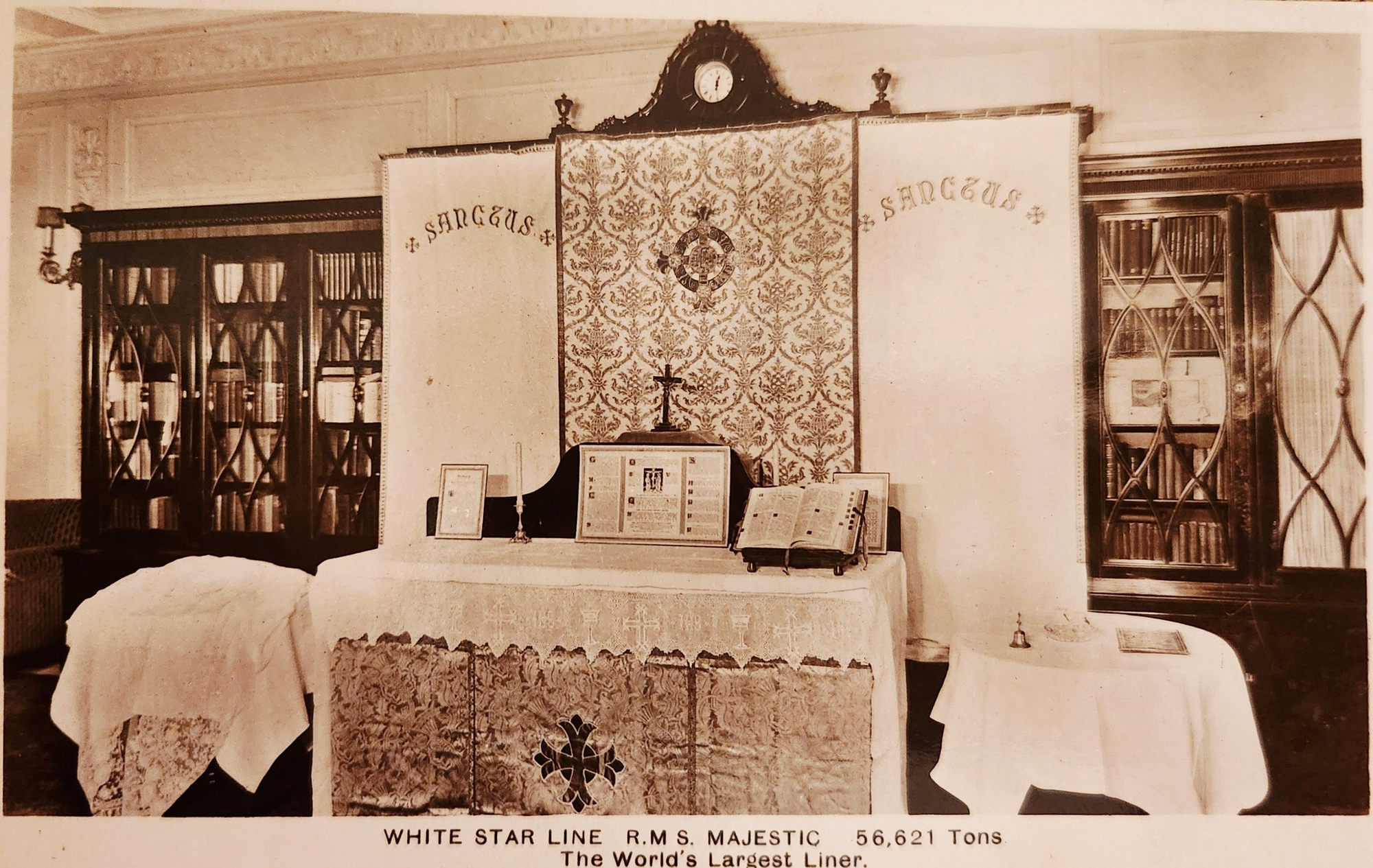
An altar set up on the RMS Majestic for a religious service in the 2nd class Library.
3rd class doesn’t appear to have had official religious services led by crew members. However, Catholic priests who were traveling in 2nd class may have led mass for 3rd class passengers in addition to the 2nd class passengers. Olaus Abelseth later recounted, “Well, then they had breakfast and then they stand around for a while and then they had services at forenoon…”
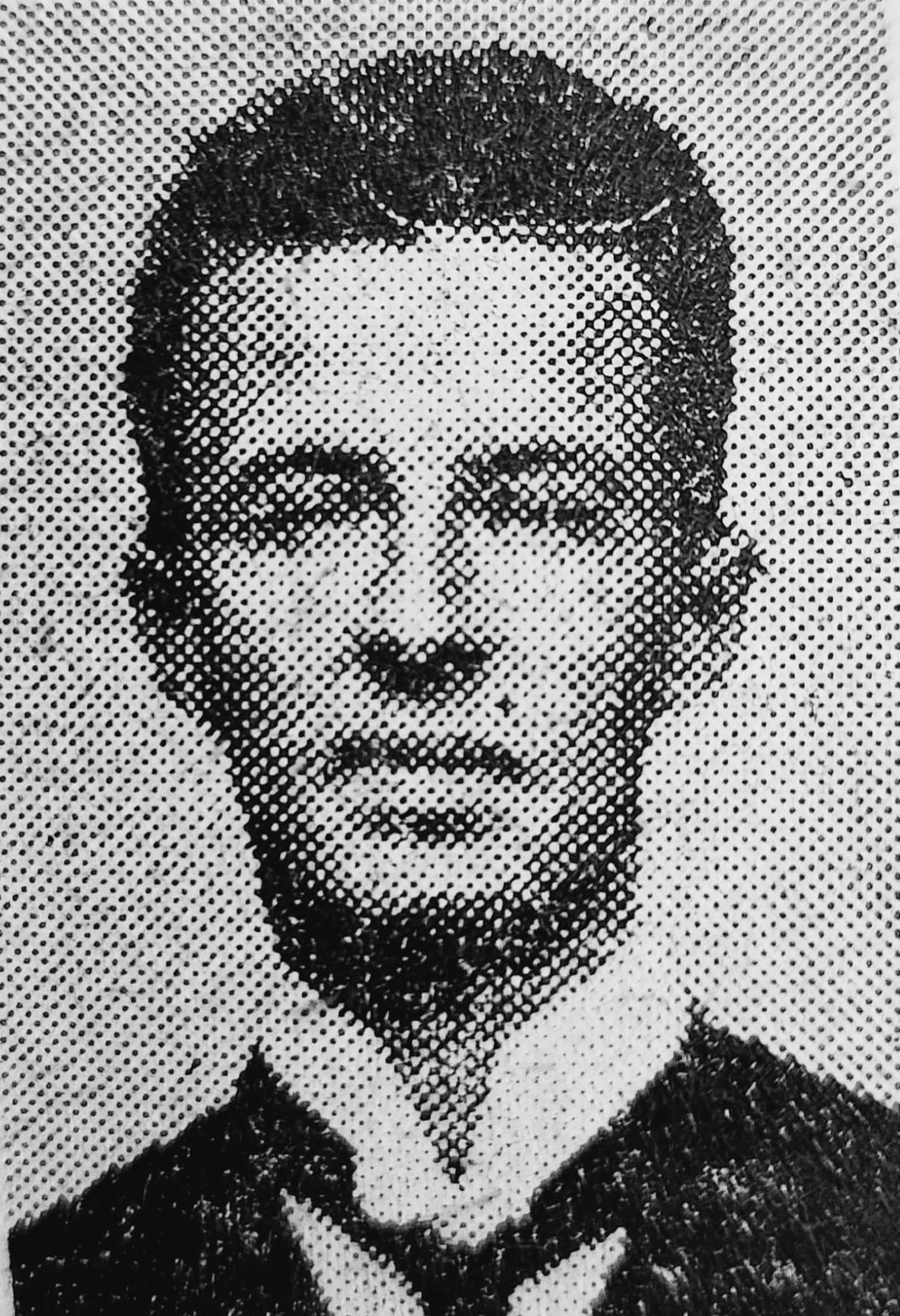
2nd class passenger Lawrence Beesley who gave one of the most detailed accounts of life in 2nd class. He recorded what was said at the religious service and sing-song.
2nd class Hymn Singing
On Sunday evening, 2nd class passengers gathered again. This time, they were invited to have a hymn sing-song where passengers could request their favorite hymns be sung. This is something less common today among Christians, but it was more common back then. This event was organized by Reverend Ernest Carter. Reverend Carter was a vicar of St. Jude in Whitechapel and was on board with his wife Lilian. Carter had a cold that day, but still went ahead with it. He got permission from Barker to use the 2nd class Dining Saloon and then began inviting people to his hymn sing-song. He invited Kate Buss who was at his table and her friend Marion Wright who in turn invited other people. The word was spread by word-of-mouth and Reverend Carter also invited people after dinner to come. At 8:30 PM, around 100 2nd class passengers from multiple denominations gathered in the Dining Saloon including Robertha "Bertha" Watt and her mother Elizabeth "Bessie." Robert Douglas Norman provided instrumental music on the piano in the middle of the room. Marion Wright sang 3 solos that night including “Lead Kindly Light” and “There is a Green Hill Far Away” and for the congregational singing, passengers could request their favorites to be played. Reverend Carter introduced each hymn and gave the history of each hymn that he learned over his years in the ministry. As Lawrence Beesley recalled, “...no hymn was sung but that he gave a short sketch of its author and in some cases a description of the circumstances in which it was composed.” Dr. Alfred Pain requested “Abide With Me, Fast Falls the Eventide.” Beesley later remarked, “It was curious to see how many chose hymns dealing with dangers at sea. I noticed the hushed tone with which all sang the hymn, ‘For those in peril on the Sea’” which is also known as “Eternal Father Strong To Save.” It is interesting to note that Sidney Collet said “Eternal Father Strong To Save” was one of Marion Wright’s solos, but Lawrence Beesley said that they all sang it. The co-authors of “On A Sea Of Glass” believe that Marion sang it as a solo and those in attendance sang along in a hushed tone. The hymn was originally written by an Englishman named William Whiting who was Winchester College Choisters’ School. Originally written as a poem, it was set to music by John B. Dykes and published in 1860. It has since taken on many different versions and been used by multiple countries for their Naval themes and religious services. Passenger Albert Caldwell said that the people around him were “happy worshippers” and that Reverend Carter “took as his subject ‘The Perils of the Sea,’ comparing the perils of life to the perils of the sea.” Despite this, the passengers did not take this to mean that they themselves would be in danger that night. Rather, the meaning was taken to have more of a spiritual meaning until upon reflection, the few who survived from this gathering realized the coincidence of the themes and what they would experience. They closed out the night with “Now The Day is Over” and they concluded at 10:00 PM as stewards started preparing the room for breakfast the next morning. The Carters and Lawrence Beesley had coffee until about a quarter to eleven. Most of them went to bed after that only to be disturbed almost 2 hours later to find themselves actually in peril on the sea.
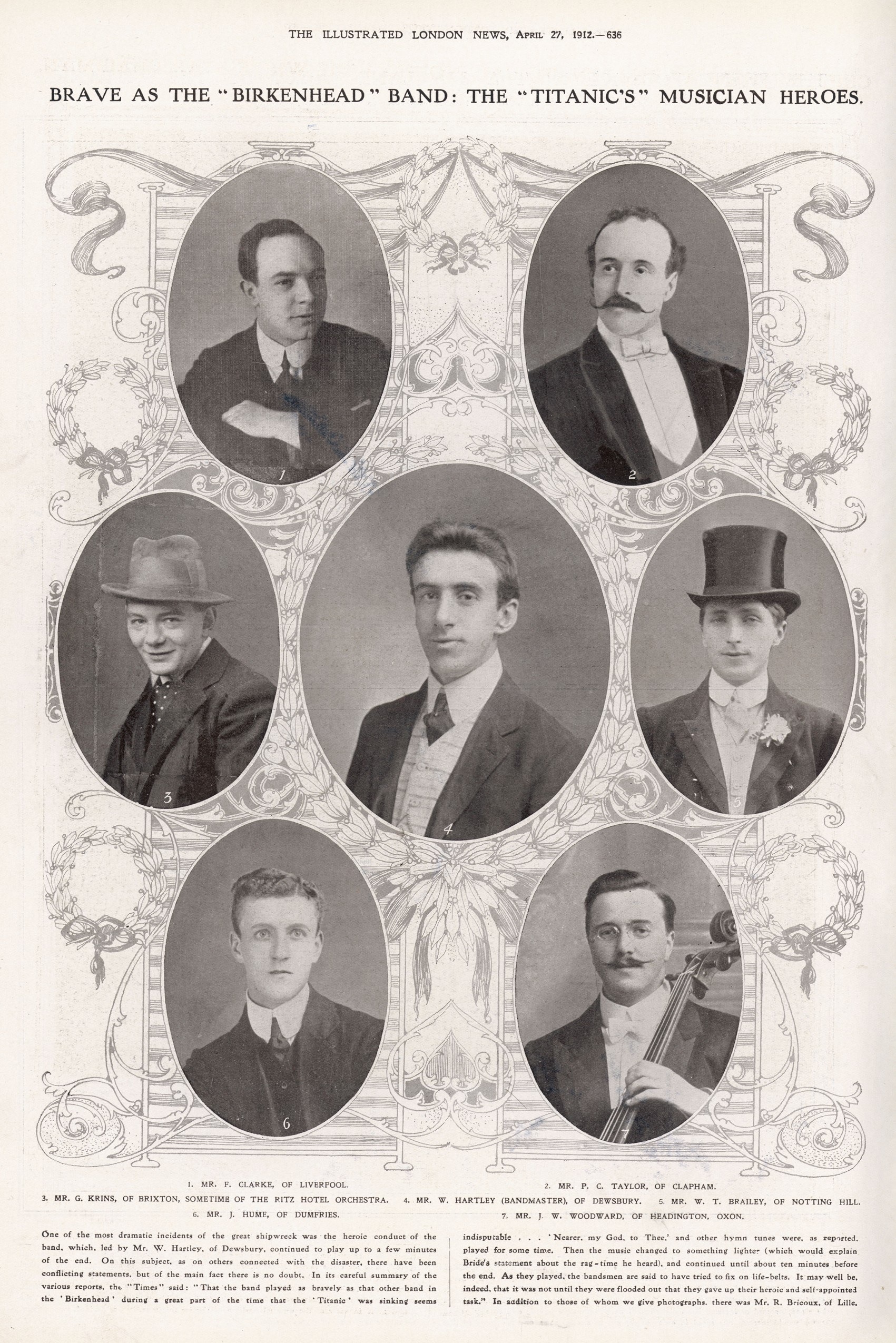
The Titanic's musicians. Not pictured is cellist Roger Bricoux. They were celebrated as heroes after the disaster.
The Heroic Band
During the sinking as passengers and crew faced possible death in the icy sea, some of their thoughts turned towards eternity and their souls. There was no music when the Titanic struck the iceberg as most of the ship was asleep, but the band afterwards gathered in order to play music which helped to keep the passengers calm. Survivors recalled hearing primarily ragtime, waltz, and patriotic tunes which were lively and kept their spirits up. As the night went on, the music started to get more somber and serious. Some of the hymns the survivors mentioned were “When We Meet Beyond,” “Lead, Kindly Light,” “Eternal Father Strong To Save,” and “Abide With Me.”
There is still a lot of controversy about the last hymn the band played with some survivors saying it was “Nearer My God To Thee” and others saying it was “Autumn”. This debate has also included questions of which version of “Nearer My God To Thee” or which “Autumn” (the hymn or the waltz called “Songe d’Automne”) was played. I can’t go into detail better than “Those Brave Fellows” by George Behe which lists the survivor accounts and examines them. The overwhelming survivor testimony indicates that “Nearer My God To Thee” was the last hymn played, though this does not negate the possibility that the hymn “Autumn” was played at some point during the sinking or towards the end. Bandmaster Wallace Hartley was asked by a friend prior to being on board the Titanic what he would play if he was on a sinking ship. Hartley replied that he would play “Oh God Our Help in Ages Past,” or “Nearer My God To Thee.” His friend specified that the “Nearer My God To Thee” he referred to was Sullivan’s setting aka Propier Deo. Hartley had a history with hymns and the two hymns he mentioned were among his favorites. His father was a choirmaster and Sunday School superintendent and Hartley got his start in the Methodist church surrounded by Methodist hymns. Hartley eventually branched off to non-spiritual music of the day as he played with orchestras and bands. He played on various ships before being assigned to Titanic. Hartley was planning to leave the sea as he was engaged to be married at the time and sadly didn’t get to fulfill his dreams. The band played until nearly the end according to survivors, although it should be noted that survivors such as Archibald Gracie IV who were near where the band would have been playing on the starboard side did not report seeing or hearing them when a wave came over the Boat Deck. This would indicate that rather than playing until the water overtook them as they are popularly portrayed, they likely stopped playing before then. Sadly, none of them survived. They are now synonymous with “Nearer My God To Thee” and have been included in nearly every adaptation of the Titanic disaster. The most famous was James Cameron’s 1997 film which used the American version known as Bethany followed by A Night To Remember which used the Horbury version more commonly used in British Episcopalian churches.
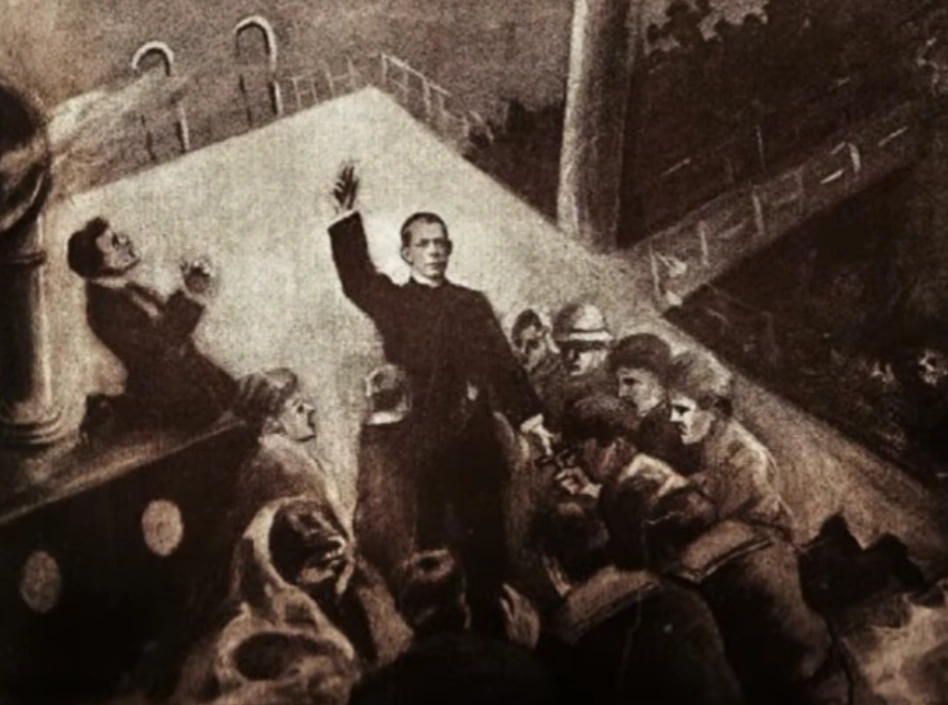
Father Byles gives absolution to passengers and helping them until the end. He and his fellow priests didn't survive.
The Clergy
Of the 7 ordained members of the clergy on the Titanic, none survived. The closest we have to a clergy survivor was Sidney Collett who was ordained and began preaching and writing after the disaster. The three Catholic priests (Father Peruschitz, Father Montvila, and Father Byles) were seen actively attending to peoples’ spiritual needs during the sinking. At one point, 3rd class passenger August Wennerstrom (who was an agnostic) saw people kneeling and praying around Father Byles. Wennerstrom had a low view of this, believing that they had essentially given up rather than attempting to survive. One of the passengers who seems to have turned to his faith in his final hours and may have been among those led by the priests was 1st class passenger Timothy J. McCarthy. His body was found with a prayer book in his pocket and according to an unknown contemporary Boston newspaper, a crucifix in his hand. The Protestant ministers appear to have attended more towards their own families. Reverend and Mrs. Carter and Reverend and Mrs. Lahtinen refused to be separated. Even though they had opportunities to put their wives into lifeboats, their wives refused to get in and be parted from their husbands. Not much is known about Reverend Kirkland’s actions on the Titanic. Reverend Bateman put his sister in law Ada Balls into a lifeboat and gave her his Bible. Ada later claimed that Bateman encouraged the band to play hymns. The same claim was made about Reverend Carter, but there is no corroborating testimony for either story. Reverend Harper put his daughter and sister in law into a lifeboat after saying good-bye to them. There are stories about Reverend Harper. One is that he gave his life jacket to a crew member telling him, “I’m not going down, I’m going up.” Another is that he was trying to preach to and convert people in the water. Such tales of his heroism are sadly not backed up by eyewitness accounts.
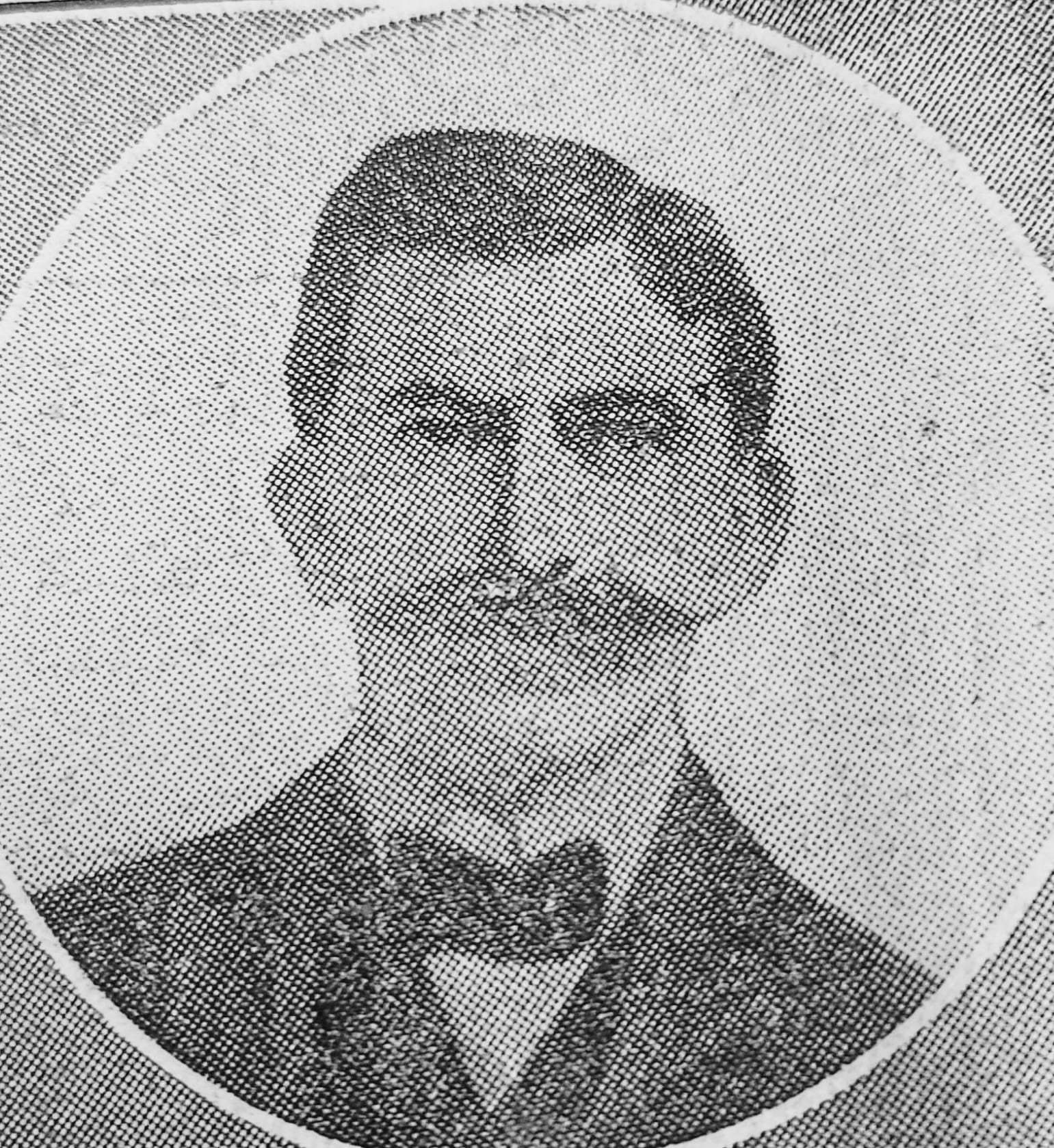 1st class passenger Archibald Gracie IV who described the religious services as well as the Titanic's final moments in detail.
1st class passenger Archibald Gracie IV who described the religious services as well as the Titanic's final moments in detail.
The Final Plunge
As Archibald Gracie IV swam away from the sinking ship, his thoughts turned to another shipwreck with ties to a famous hymn. “What may be of interest is the thought that then occurred to me of the accounts and pictures of a wreck, indelibly impressed upon my memory when a boy, because of my acquaintance with some of the victims, of a frightful disaster of that day, namely the wreck of the Ville du Havre in the English Channel in 1873, and I had in mind Mrs. Bulkley’s description, and the picture of her clinging to some wreckage as a rescue boat caught sight of her, bringing the comforting words over the water, “We are English sailors coming to save you.” I looked around, praying for a similar interposition of Fate, but I knew the thought of a rescuing boat was a vain one—for had not all the lifeboats, loaded with women and children, departed from the ship fifteen or twenty minutes before I sank with it? And had I not seen the procession of them on the port side fading away from our sight?” The Ville du Havre also had the Spafford family on board. Horatio G. Spafford was a wealthy lawyer who also had real estate holdings and was a supporter of Dwight L. Moody and the YMCA. In 1871, the Chicago Fire destroyed many of his properties and he lost a lot of money. In 1873, the family decided after multiple tragedies to go to Europe for a vacation and booked the Ville du Havre to take them to England. Just before leaving, Horatio had to cancel his passage to take care of some last-minute business, but sent his family ahead. On April 9, 1873, the Ville du Havre collided with another ship called the Loch Earn and sank. Out of the 313 passengers and crew, only 87 survived. Among those who were killed were all of the Spafford children. His wife on the other hand did survive and was brought to England where she relayed the news to her husband. In 1876 as Horatio continued to ponder and grieve his children along with his many other losses, he penned the words to one of the most famous hymns ever, “It Is Well With My Soul.” The words were put to music by Philip Bliss and are sung by churches internationally in different languages to this day. Though we cannot be certain if Gracie was aware of Mr. Spafford’s story or its connection to that famous hymn, the thought of this terrible disaster ran through Gracie’s mind as he found deliverance in the form of the capsized lifeboat Collapsible B which allowed him and other men in the water to survive. After Gracie and other men got on the bottom of the boat and they had watched the Titanic sink, Lightoller took a poll of what denominations people were on the boat. Finding a variety of denominations among those on the boat, they settled on reciting the Lord’s Prayer.
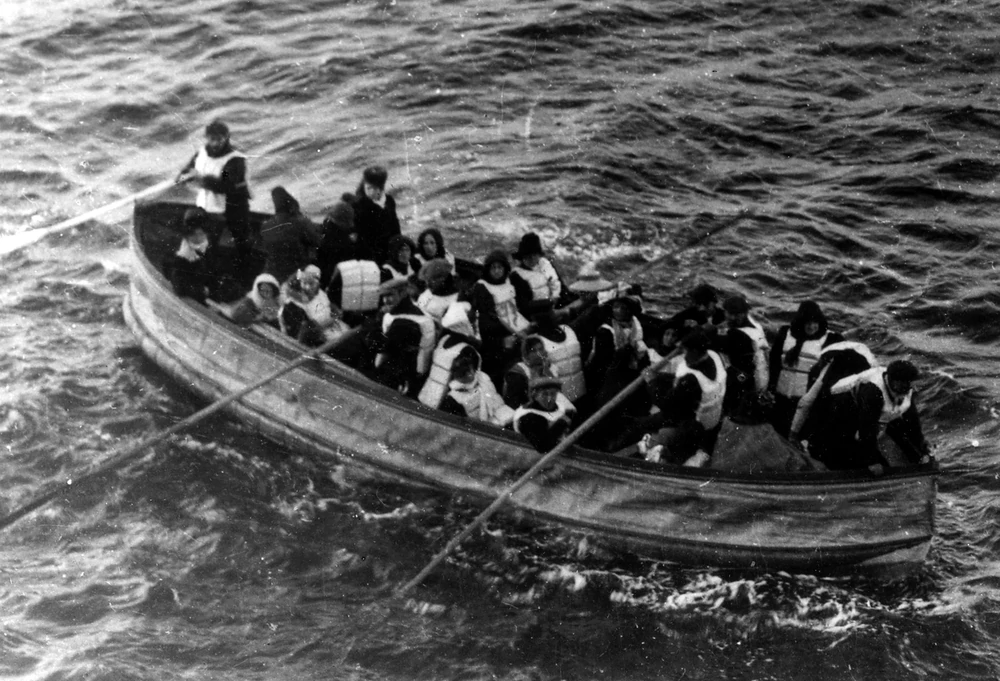 Collapsible D approaches the Carpathia after singing "Pull For the Shore, Sailor."
Collapsible D approaches the Carpathia after singing "Pull For the Shore, Sailor."
The Long Night
As the people in Titanic’s lifeboats began their ordeal until they were rescued, one particular hymn came to several peoples’ minds. In Collapsible D, 2nd class passenger Edwina Troutt said, “The sailors were singing, ‘Pull for the shore, sailors’ and rowing, half dressed in frozen garments.” In Boat No. 8, the freezing passengers and crew rowed through the night when they saw the light of a rescue ship on the horizon. To keep their spirits up, Seaman Thomas Jones suggested that they sing “Pull for shore, sailors.” The Countess of Rothes at the tiller afterwards suggested that they sing “Lead, Kindly Light” which they did. This was the third occasion that “Lead, Kindly Light” was sung or played that night. In Boat No. 13, Baker Charles Burgess said, “Never shall I forget the feeling of all on board our boat when the Carpathia hove in sight. We who were at the oars pulled with renewed spirits, and one by one the boats took up the hymn “Pull for the Shore, Sailor,” as we put our backs to the work.” The hymn “Pull for the Shore, Sailor” was written by Philip Bliss for his hymnal for Sunday Schools which was published in 1873. It gained popularity in the United States and Great Britain, being used by ministers when they used nautical analogies in their sermons. Many in Titanic’s crew appear to have grown up with this lively hymn. When the time came to row through the night and especially pick up speed after the Carpathia arrived, this hymn came to their minds to give them enough energy to reach safety.
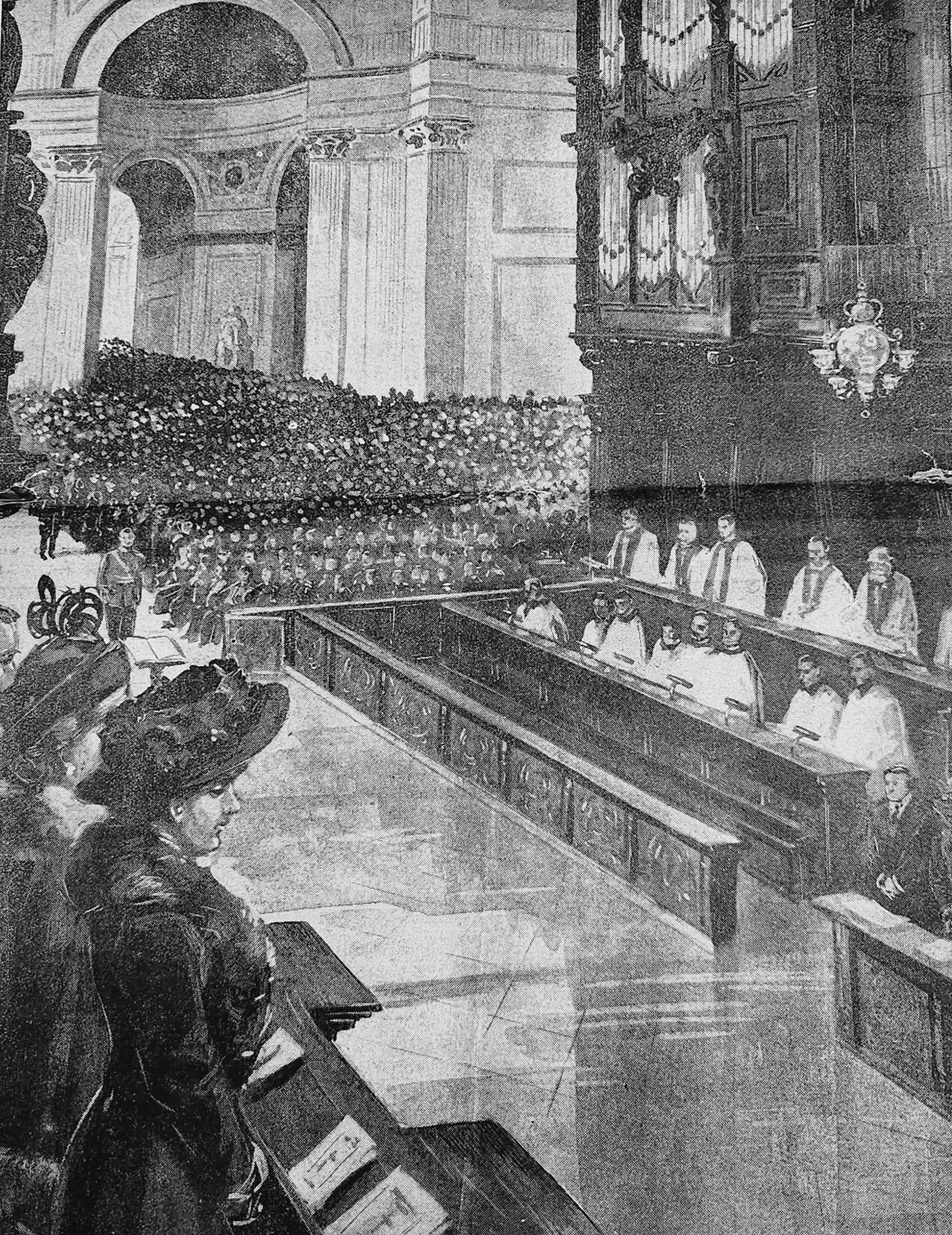
The Titanic Memorial service at St. Paul's Cathedral April 19, 1912 with thousands in attendance.
Aftermath
In the aftermath of the disaster, the world mourned the large loss of life in the disaster in a myriad of ways. One of them was through church services for individual victims and for everybody. With the reports that “Nearer My God To Thee” was played as the ship went down and it already being a song popularly played at funerals, it was commonly heard as people remembered those lost. Roughly 10,000 people including the royal family attended a memorial service at April 19, 1912 at St. Paul’s Cathedral in London. The cathedral itself could hold 3,500 people with many others lining the streets outside. Hymns sung at that service included “Rock of Ages” and “Eternal Father Strong To Save.”
Resources:
“The Truth about the Titanic” by Archibald Gracie IV (1913)
“On Board the RMS Titanic: Memories of a Maiden Voyage” by George Behe (2012)
“The Loss of the SS Titanic” by Lawrence Beesley (1912)
“A Rare Titanic Family” by Julie Hedgepeth Williams (2012)
“On A Sea Of Glass” by J. Kent Layton, Tad Fitch, and Bill Wormstedt (2015)
“Those Brave Fellows” by George Behe (2020
The Titanic Commutator Volume 20 Number 4 1997
The Titanic Commutator Volume 17 Number 1 1993
North Dakota Archives
Hymnology Archive.com
London Illustrated News April 20, 1912
The Auburn Citizen April 23, 1912
The Daily Banner May 16, 1912
The Daily Telegraph April 22, 1912
Image sources:
Lightstorm Entertainment/20th Century Fox
Daily Sketch April 19, 1912
Daily Graphic April 20, 1912
Wikipedia/Public Domain
Louis Ogden Photography/Library of Congress
My thanks to Patrick Parsons for calling my attention to one of the accounts.